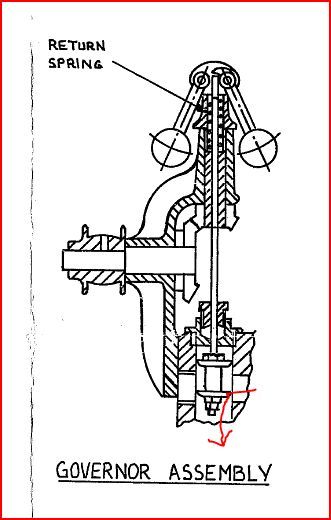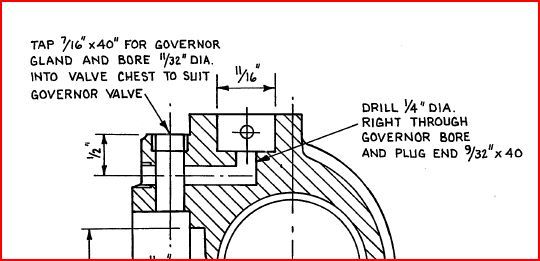Almost all governors require a drop in speed (droop) to initiate action to recover the loss of speed. As the speed decreases, in a Mechanical governor, the force of the governor spring overcomes the centrifugal force acting on the weights, and as the weights fall, the linkage attempts to increase engine power, to regain the the lost speed..
Hence in this case, as the saw starts to cut, load on the engine increases, speed falls, and the governor admits more steam to counteract this, so that the exhaust note hardens. You will hear the same thing happen with an Internal Combustion Engine, and the exhaust system will grow hotter, sometimes to the point of glowing red hot.
For A C power generation, especially where parallelling to the mains is required, speed has to be controlled much more closely, to maintain the correct frequency. When gensets are to be operated in parallel,, it is usual for one set to be designated as the master, which is isochronously governed, so that despite changes in load , its speed remains constant. The Woodward PSG was a servo governor which could provide variable droop, until it became isochronous, (it produced, internally, a false droop signal). In some samples, because of tolerance build ups, it was possible take the adjuster over centre, so that the speed would fall as the load was reduced!
The Stanadyne DB series of fuel injection pumps could also be fitted with variable droop governors, for power generation, or other applications where close control speed control was imperative.
Because the reel speed needs to be closely controlled, Combine Harvesters have tighter governing than Tractors, which because of power take off work, is again, tighter than for road vehicles. Close governing on a road vehicle can be unpleasant, as anyone who has experienced the governor cutting in on a Gardner powered vehicle, or an early diesel Land Rover, will testify!
Electronic governors operate by monitoring frequency, either internally, or that of the current being supplied to the load. Because of their almost instantaneous response, speed can be controlled extremely closely; sometimes to tenths of an R P M!
Howard
Anonymous.







